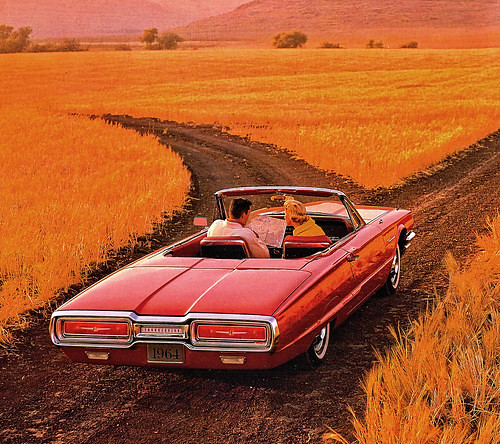
The 1960s and 1970s marked a truly golden age for the automotive world, a period when car manufacturers dared to push boundaries in every conceivable direction. Whether it was through sheer muscle, audacious style, or an undeniable presence, these decades gifted us vehicles that continue to command attention and respect today. From the raw, unadulterated power delivered to the rear wheels to the meticulously sculpted clean lines and driver-focused interiors, these machines didn’t just make a fleeting splash upon their launch; they carved out a lasting impression on the asphalt and in the collective memory of enthusiasts.
This era was characterized by an exhilarating muscle car arms race, where innovation and horsepower reigned supreme, giving birth to iconic vehicles that embodied speed and a rebellious spirit. Many car enthusiasts would passionately argue that these older cars possess an intangible ‘soul’—a characteristic often missing in their modern counterparts, which, despite being safer, more fuel-efficient, and quicker, sometimes lack that visceral connection. This sentiment underscores the enduring appeal of the machines that once ruled American highways, embodying a time when gasoline was plentiful and horsepower was king.
As we take a captivating trip down memory lane, we’ll delve into some of the most unforgettable cars from this transformative era. This journey will highlight what made each model truly exceptional, from its technical specifications and raw performance data to its groundbreaking design and significant cultural impact. Prepare to explore a diverse collection of automotive legends that collectively defined an exhilarating chapter in motoring history, leaving an indelible mark that continues to resonate with collectors and enthusiasts worldwide.
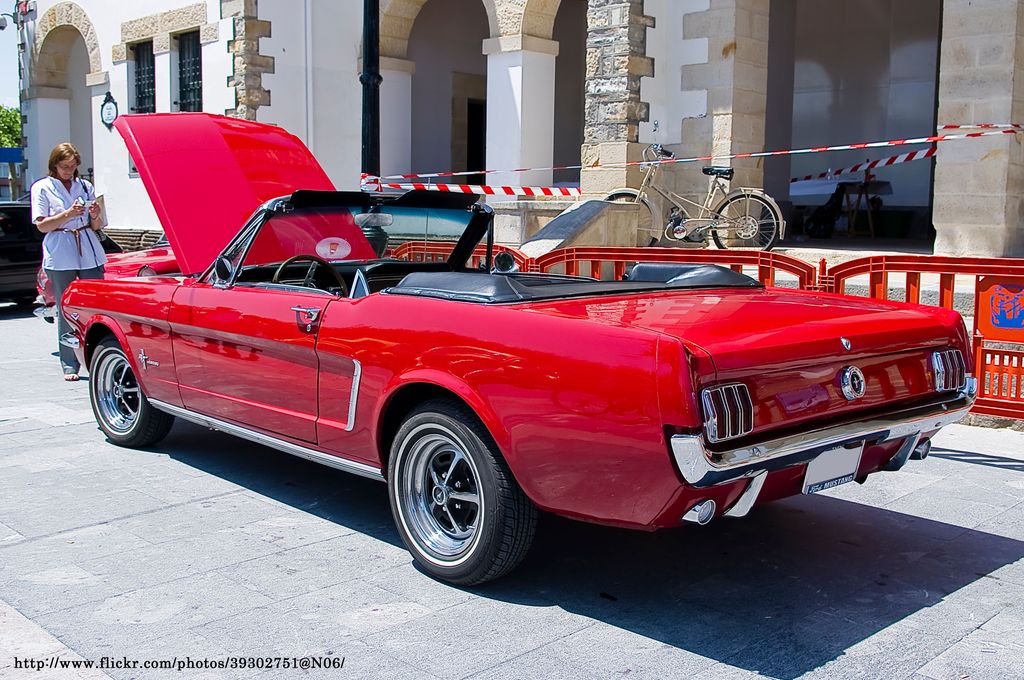
1. **1964 Ford Mustang** The debut of the 1964 Ford Mustang wasn’t merely the launch of a new car; it was arguably the biggest automotive event of the decade, effectively defining the ‘pony car’ category and instantly becoming an American icon. While it may not have been the absolute first car of its type, its blend of aggressive styling and accessible performance quickly made it a massive hit. Under the hood, buyers had a range of engine options, from a modest 2.8L inline-six, offering an economical entry point, to a robust 4.7L V8 capable of generating up to 271 horsepower, providing a solid mix of exhilarating performance and everyday affordability.
Beyond its powertrain, the Mustang’s design was a masterclass in appealing aesthetics and practicality. The fastback and convertible models, in particular, swiftly rose to become crowd favorites, epitomizing the sporty yet sophisticated image the car projected. Inside, the cabin featured a simple, driver-focused layout, which could be upgraded with optional bucket seats and a sporty steering wheel to enhance the driving experience. This potent combination of unmistakable style and inherent practicality made the Mustang an instant classic, a vehicle that continues to turn heads and command attention on any road it graces.
With an affordable price tag of just $2,368 for the base model, the Mustang’s broad appeal meant that it seemingly became ubiquitous, seen everywhere from Springtime Yellow to Poppy Red. To this day, the first-generation Mustang holds its title as the world’s favorite pony car, a testament to its enduring design, performance versatility, and profound cultural impact that solidified its place in automotive history.
Car Model Information: 1966 Ford Mustang Base
Name: Ford Mustang
Caption: 2018 Ford Mustang GT 5.0
Aka: Ford T5 (Germany)
Manufacturer: Ford Motor Company
Production: March 1964 – present
ModelYears: 1965–present
Class: Unbulleted list
BodyStyle: Unbulleted list
Layout: Front-engine, rear-wheel-drive layout
Categories: 1970s cars, 1980s cars, 1990s cars, 2+2 coupés, 2000s cars
Summary: The Ford Mustang is a series of American automobiles manufactured by Ford. In continuous production since 1964, the Mustang is currently the longest-produced Ford car nameplate. Currently in its seventh generation, it is the fifth-best selling Ford car nameplate. The namesake of the “pony car” automobile segment, the Mustang was developed as a highly styled line of sporty coupes and convertibles derived from existing model lines, initially distinguished by “long hood, short deck” proportions.
Originally predicted to sell 100,000 vehicles yearly, the 1965 Mustang became the most successful vehicle launch since the 1927 Model A. Introduced on April 17, 1964 (16 days after the Plymouth Barracuda), over 400,000 units were sold in its first year; the one-millionth Mustang was sold within two years of its launch. In August 2018, Ford produced the 10-millionth Mustang; matching the first 1965 Mustang, the vehicle was a 2019 Wimbledon White convertible with a V8 engine.
The success of the Mustang launch led to multiple competitors from other American manufacturers, including the Chevrolet Camaro and Pontiac Firebird (1967), AMC Javelin (1968), and Dodge Challenger (1970). It also competed with the Plymouth Barracuda, which was launched around the same time. The Mustang also had an effect on designs of coupes worldwide, leading to the marketing of the Toyota Celica and Ford Capri in the United States (the latter, by Lincoln-Mercury). The Mercury Cougar was launched in 1967 as a unique-bodied higher-trim alternative to the Mustang; during the 1970s, it included more features and was marketed as a personal luxury car.
From 1965 until 2004, the Mustang shared chassis commonality with other Ford model lines, staying rear-wheel-drive throughout its production. From 1965 to 1973, the Mustang was derived from the 1960 Ford Falcon compact. From 1974 until 1978, the Mustang (denoted Mustang II) was a longer-wheelbase version of the Ford Pinto. From 1979 until 2004, the Mustang shared its Fox platform chassis with 14 other Ford vehicles (becoming the final one to use the Fox architecture). Since 2005, Ford has produced two generations of the Mustang, each using a distinct platform unique to the model line.
Through its production, multiple nameplates have been associated with the Ford Mustang series, including GT, Mach 1, Boss 302/429, Cobra (separate from Shelby Cobra), and Bullitt, along with “5.0” fender badging (denoting 4.9 L OHV or 5.0 L DOHC V8 engines).
Get more information about: Ford Mustang
Buying a high-performing used car >>>
Brand: Ford Model: Mustang
Price: $32,991 Mileage: 98,811 mi.
Read more about: Beyond the Pony: Unearthing Ford’s Fastest ’60s Muscle Car Gems You Never Knew Existed
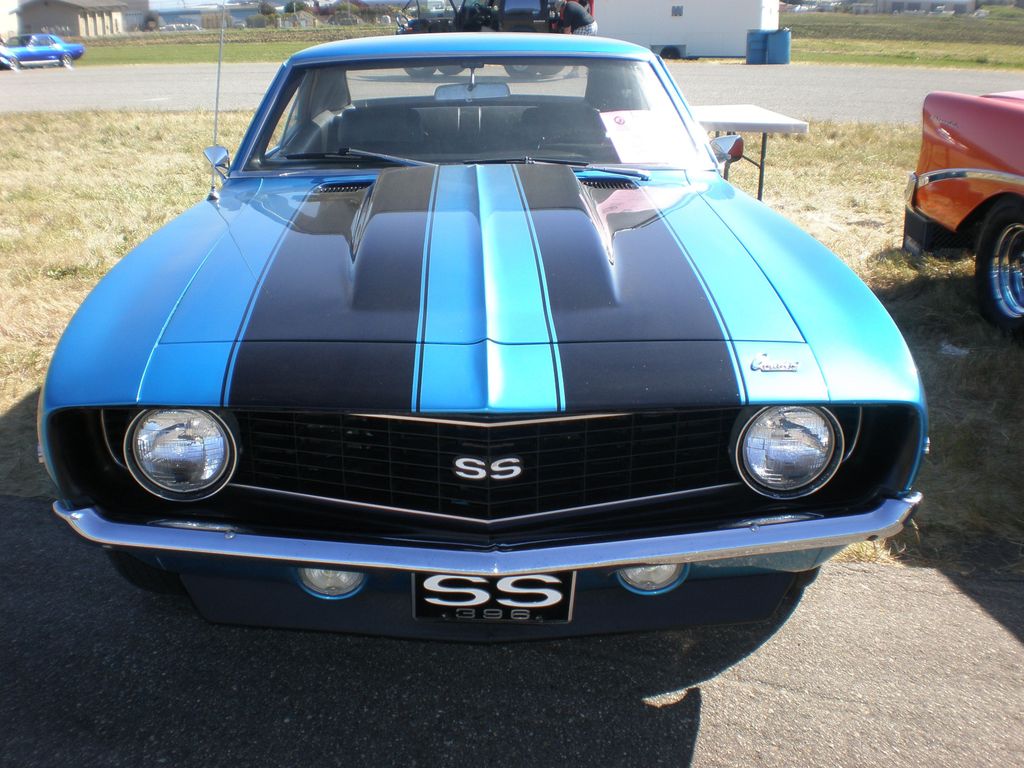
2. **1969 Chevrolet Camaro SS** The 1969 Chevrolet Camaro SS emerged as General Motors’ definitive answer to the unprecedented success of the Ford Mustang, aggressively positioning itself to capture a significant slice of the burgeoning pony car market. Introduced in 1966, the Camaro was a massive hit from the outset, with approximately 220,000 examples sold within its first year alone. The ’69 SS variant, in particular, brought serious muscle to the forefront, powered by a potent 5.7L V8 engine that could deliver up to an impressive 375 horsepower, making it a formidable contender in the era’s performance wars.
Designed with an unmistakably aggressive aesthetic, the Camaro SS featured a bold grille and a wide, assertive stance that conveyed its raw power and competitive spirit. The Super Sport (SS) package was not just about looks; it incorporated vital performance upgrades that ensured the car was exceptionally quick off the line, ready to challenge anything that dared pull up alongside it. This mean-looking machine, offered with various potent V8 options beneath the hood, was engineered to dominate, both visually and dynamically.
Inside, the Camaro maintained a distinctly sporty character, equipped with comfortable bucket seats and a clean, uncluttered dashboard design that prioritized the driver. This thoughtful blend of raw power and stylish presentation was instrumental in allowing the Camaro to carve out a permanent and cherished place in the annals of muscle car history. While perhaps not as globally popular as the Ford Mustang, the Chevrolet Camaro has undeniably gone down in history as one of the most legendary American vehicles of all time, revered for its performance and iconic design.
Car Model Information: 1968 Chevrolet Camaro
Name: Chevrolet Camaro
Manufacturer: Chevrolet
Production: 1966–2002,2009–2023
ModelYears: 1967–2002,2010–2024
Class: Pony car
BodyStyle: coupe,convertible
Platform: GM F platform,GM Zeta platform,GM Alpha platform
Layout: Front-engine, rear-wheel-drive layout
Categories: 1970s cars, 1980s cars, 1990s cars, 2+2 coupés, 2000s cars
Summary: The Chevrolet Camaro is a mid-size American automobile manufactured by Chevrolet, classified as a pony car. It first went on sale on September 29, 1966, for the 1967 model year and was designed to compete with the Ford Mustang. The Camaro shared its platform and major components with the Firebird, produced by General Motors’ Pontiac division that was also introduced for the 1967 model year.
Four distinct generations of the Camaro were developed before production ended in 2002. The nameplate was revived on a concept car that evolved into the fifth-generation Camaro; production started on March 16, 2009.
Production of the sixth generation of the Camaro ended in December 2023, for the 2024 model year.
Get more information about: Chevrolet Camaro
Buying a high-performing used car >>>
Brand: Chevrolet Model: Camaro
Price: $79,980 Mileage: 1,713 mi.
Read more about: Dodge Vs Plymouth: Unpacking the 10 Biggest Differences in Their Legendary Classic Muscle Cars
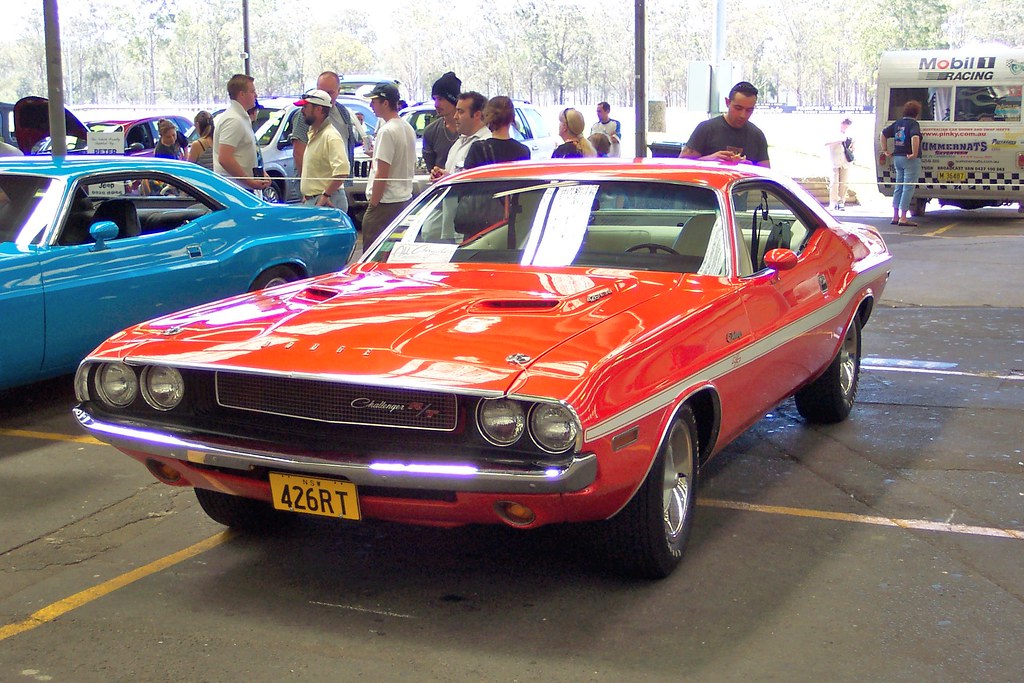
3. **1970 Dodge Challenger** The 1970 Dodge Challenger burst onto the scene, Dodge’s powerful entry into the pony car segment, explicitly developed to fiercely compete with the established Ford Mustang and General Motors’ offerings. Built on the versatile E-Body platform, which it shared with the Plymouth Barracuda, the Challenger immediately made a statement with its wide, muscular body and bold, aggressive stripes, giving it a truly menacing look that was perfectly matched by its formidable straight-line performance capabilities.
Underneath its imposing hood, the Challenger offered an extensive array of engine options, catering to a wide spectrum of performance desires. These ranged from a more modest 3.3L inline-six in the base model to an awe-inspiring 7.2L V8 HEMI engine, a powerhouse capable of pushing out an astonishing 425 horsepower. Buyers had plenty of optional V8 motors to choose from, including a formidable 440-cubic inch big-block or the legendary 426-cubic inch Hemi, firmly positioning the Challenger at the peak of the era’s horsepower wars.
The interior of the Challenger was designed to be both roomy and comfortable, providing a spacious cockpit with inviting seats and a straightforward dashboard layout that was keenly focused on the driving experience. This combination of undeniable power, audacious styling, and driver-centric design quickly cemented its status as a muscle car icon. The Dodge Challenger remains a powerful symbol of an era when automakers relentlessly pursued ultimate performance, embodying the very essence of American automotive prowess.
Car Model Information: 2014 Dodge Challenger SXT
Name: Dodge Challenger
Production: 1969–1974,1977–1983,2008–2023
ModelYears: 1970–1974,1978–1983,2008–2023
Caption: 2015 Dodge Challenger SRT Hellcat
Manufacturer: Dodge
Categories: 1970s cars, 1980s cars, 2000s cars, 2010s cars, 2020s cars
Summary: The Dodge Challenger is the name of three generations of automobiles produced by the American automobile manufacturer Dodge. However, the first use of the Challenger name by Dodge dates back to 1959 for marketing a “value version” of the full-sized Coronet Silver Challenger.
From model years 1970 to 1974, the first-generation Dodge Challenger pony car was built using the Chrysler E platform in hardtop and convertible body styles sharing significant components with the Plymouth Barracuda.
The second generation, from model years 1978 to 1983, was a rebadged Mitsubishi Galant Lambda / Sapporo, a coupe version of an economical compact car.
The third and current generation is a full-size muscle car that was introduced in early 2008 initially as a rival to the evolved fifth generation Ford Mustang and the fifth generation Chevrolet Camaro.
In November 2021, Stellantis announced that the 2023 model year would be the final model year for both the LD Dodge Charger and LA Dodge Challenger, as the company will focus its plans on electric vehicles rather than fossil fuel-powered vehicles, due to tougher emissions standards required by the Environmental Protection Agency for the 2023 model year. Challenger production ended on December 22, 2023, and the Brampton, Ontario, assembly plant will be re-tooled to assemble an electrified successor.
Get more information about: Dodge Challenger
Buying a high-performing used car >>>
Brand: Dodge Model: Challenger
Price: $10,944 Mileage: 108,690 mi.
Read more about: Beyond the Pony: Unearthing Ford’s Fastest ’60s Muscle Car Gems You Never Knew Existed
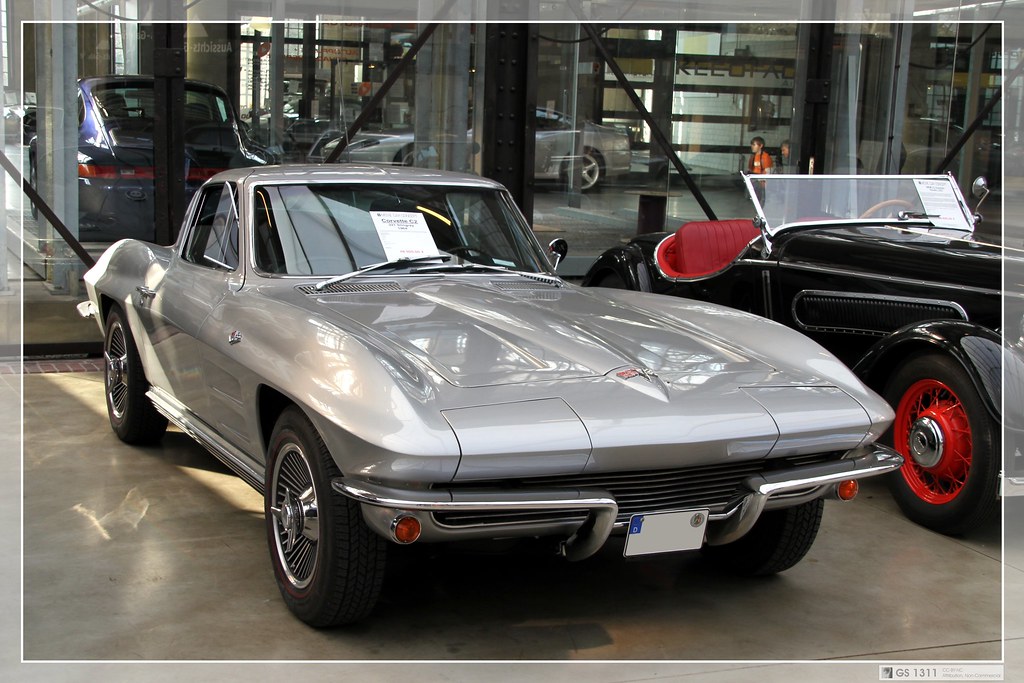
4. **1963 Chevrolet Corvette Sting Ray** The introduction of the 1963 Chevrolet Corvette Sting Ray marked a pivotal moment for America’s sports car, ushering in a dramatic new look and a significant leap in engineering. The second generation, or C2, of the Corvette, received a much-needed update from its predecessor, presenting a sharper, more aerodynamic styling that instantly captivated enthusiasts. Its most distinctive feature, the unique split rear window, contributed to an iconic silhouette that remains celebrated among collectors to this day, exclusively found on the ’63 Vette.
Beneath its sleek exterior, the Sting Ray was not just a visual marvel; it was engineered for superior performance. Lighter and noticeably more nimble than its earlier iterations, it offered a more engaging driving experience. The base 5.4L V8 engine delivered a respectable 250 horsepower, with higher-output versions readily available for those seeking even greater exhilaration. This blend of stunning aesthetics and improved dynamics set a new standard for American sports cars.
Inside, the Sting Ray featured a snug yet highly functional cockpit. Its bucket seats cradled occupants, while a wraparound dashboard thoughtfully placed all controls within easy reach of the driver, emphasizing its performance-oriented design. The Sting Ray swiftly became a design benchmark, its innovative styling and impressive performance ensuring it still stands out in any automotive crowd. This revolutionary release solidified the Corvette’s legacy, proving that an American automaker could develop a two-seater that rivaled the class and power of the finest Italian roadsters.
Car Model Information: 2025 Honda Civic Sport
Name: Chevrolet Corvette (C2)
Caption: 1963 Chevrolet Corvette Sport Coupe
Manufacturer: Chevrolet
Aka: Chevrolet Corvette Sting Ray
Production: August 1962–July 1967
ModelYears: 1963–1967
Platform: Series 0800 (1962-1964),Series 194 (1965-1967)
Chassis: Body-on-frame
Assembly: St. Louis, Missouri
Predecessor: Chevrolet Corvette (C1)
Successor: Chevrolet Corvette (C3)
Class: Sports car
BodyStyle: Convertible (car),coupé
Layout: Front-engine, rear-wheel-drive layout
Engine: {{cvt,327,cuin,L,1,Chevrolet small-block engine#327,V8 engine
Wheelbase: cvt
Length: cvt
Width: cvt
Height: cvt
Weight: cvt
Transmission: manual transmission,manual transmission,Powerglide
Related: Bill Thomas Cheetah
Designer: Larry Shinoda
Categories: 1960s cars, All articles needing additional references, All articles with specifically marked weasel-worded phrases, All articles with unsourced statements, Articles needing additional references from July 2024
Summary: The Chevrolet Corvette (C2) is the second-generation Corvette sports car, produced by the Chevrolet division of General Motors (GM) for the 1963 through 1967 model years.
Get more information about: Chevrolet Corvette (C2)
Buying a high-performing used car >>>
Brand: Chevrolet Model: Corvette Sting Ray
Price: $26,923 Mileage: 1,009 mi.
Read more about: Your Ride, Your Story: Unpacking the Brutal Stereotypes of 14 Popular Car Models
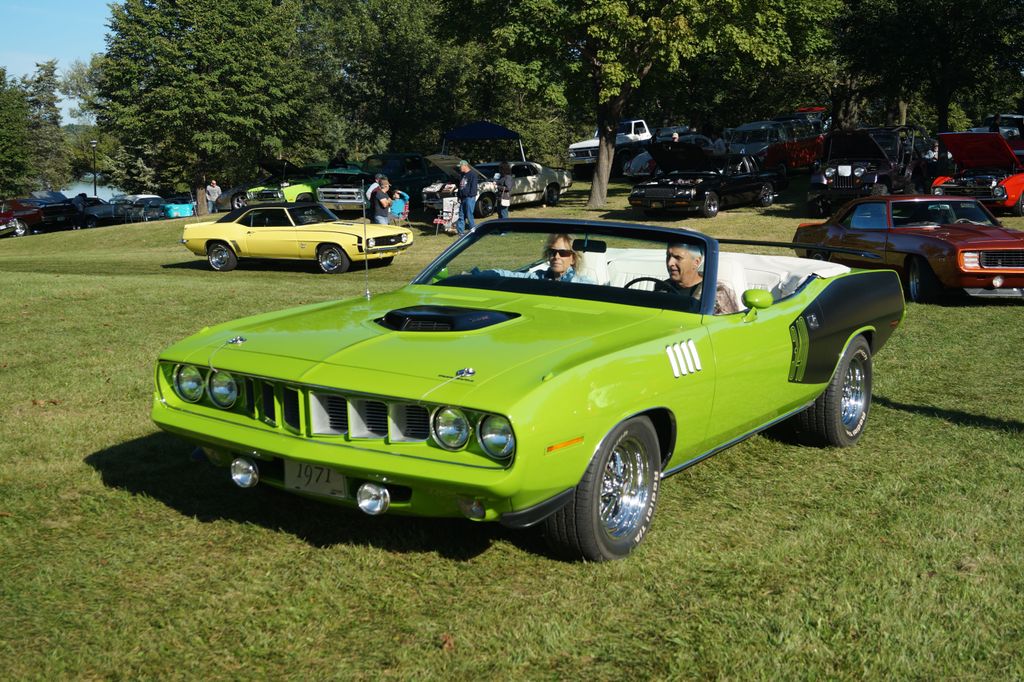
5. **1971 Plymouth Barracuda** The 1971 Plymouth Barracuda emerged as a definitive statement from Plymouth, representing a powerful answer to the escalating muscle car boom of the era. This model offered serious performance, with a formidable range of engines that could satisfy even the most demanding enthusiasts. Starting from a 3.7L inline-six, the Barracuda line escalated to include the mighty 7.2L V8 HEMI, capable of generating an astounding 425 horsepower. Its aggressive styling, characterized by a wide stance, made it an unmistakable presence on the road, ensuring it was hard to miss.
One of the most engaging aspects for petrolheads was the optional ‘Cuda package, which served to elevate the Barracuda’s performance credentials even further. This package upgraded the motor to a 290-horsepower V8 as standard, with the option for the truly potent 425-horsepower big-block Hemi motor for buyers seeking the ultimate in power. This powerful distinction, however, sometimes leads to confusion, as many people mistakenly believe the ‘Cuda package and the Barracuda model are interchangeable names, a mistake even we occasionally admit to.
Despite any nomenclature confusion, the Barracuda’s interior provided a simple yet comfortable cabin, outfitted with sport seats and a straightforward instrument cluster that prioritized functionality. This carefully crafted combination of raw power, aggressive styling, and a no-nonsense approach to performance perfectly captured the quintessential muscle car spirit of the early 1970s. The 1971 Plymouth Barracuda stands as a legendary muscle car, a testament to an era where bold design met uncompromising power.
Car Model Information: 1971 Plymouth Barracuda
Caption: 1970 Hardtop Coupe
Name: Plymouth Barracuda
Manufacturer: Plymouth (automobile)
Production: 1964–1974
Assembly: Fenton, Missouri,Hamtramck, Michigan,Maywood, California,Windsor, Ontario
Layout: Front-engine, rear-wheel drive layout
Class: Pony car
Categories: 1970s cars, All articles with dead external links, All articles with unsourced statements, Articles with dead external links from February 2018, Articles with dead external links from January 2022
Summary: The Plymouth Barracuda is a two-door pony car that was manufactured by Chrysler Corporation from 1964 through 1974 model years.
The first-generation Barracuda was based on the Chrysler A-body and was offered from 1964 until 1966. A two-door hardtop (no B-pillar) fastback design, it shared a great majority of parts and bodywork with the Plymouth Valiant, except for the distinctive wraparound rear glass.
The second-generation Barracuda, though still Valiant-based, was heavily redesigned. Built from 1967 through 1969, it was available as a two-door in fastback, notchback, and convertible versions.
The third generation, offered from 1970 until 1974, was based on the Chrysler E-body, exclusive to it, and the slightly larger Dodge Challenger. A completely new design, the two-door Barracuda was available in hardtop and convertible body styles.
Get more information about: Plymouth Barracuda
Buying a high-performing used car >>>
Brand: Plymouth Model: Barracuda
Price: $69,999 Mileage: 102,036 mi.
Read more about: Dodge Vs Plymouth: Unpacking the 10 Biggest Differences in Their Legendary Classic Muscle Cars

6. **1967 Pontiac GTO** The 1967 Pontiac GTO holds a revered place in automotive history, often hailed as the original muscle car for establishing the iconic formula: a powerful, large engine placed within a mid-size car chassis. This innovation set the blueprint for countless performance vehicles that followed. The ’67 model itself came equipped with a robust 6.6L V8 engine, producing a formidable 360 horsepower, striking a masterful balance between raw, untamed power and street-friendly handling characteristics that made it genuinely enjoyable to drive daily.
Visually, the GTO was instantly recognizable, boasting a signature split grille and muscular, bold lines that exuded presence and confidence. While originally conceived as an optional package for the Pontiac Le Mans, the GTO’s immense popularity quickly propelled it into becoming a separate, distinct model by 1964. This strategic move solidified its identity as a standalone powerhouse, cementing its status as a benchmark for all muscle cars that aspired to its level of performance and style. The available tri-power 389 engine, famously, could smoke the tires through all four gears, a capability that enthusiasts certainly appreciated, though we’d never officially endorse such activities.
The interior skillfully blended comfort with sportiness, featuring supportive bucket seats and a driver-centric dashboard that put essential controls at the pilot’s fingertips. Don’t be fooled by its name, which carries an Italian touch—Gran Turismo Omologato—inspired by Ferrari’s legendary 250 GTO. The Pontiac GTO is as American as a muscle car can possibly get, powered by a gas-guzzling V8 rated at an impressive 325 horsepower, a true embodiment of American performance engineering and style.
Car Model Information: 1966 Pontiac GTO Coupe
Name: Pontiac GTO
Caption: 2005 Pontiac GTO
Manufacturer: Pontiac (automobile),Holden
Class: Mid-size car,Compact car,Mid-size car
Production: 1963–1974,2003–2006
Predecessor: Pontiac Tempest
Layout: Front-engine, rear-wheel-drive layout
ModelYears: 1964-1974 2004-2006
Categories: 1970s cars, 2000s cars, All articles with unsourced statements, Articles with short description, Articles with unsourced statements from October 2008
Summary: The Pontiac GTO is a front-engine, rear-drive, two-door, and four-passenger automobile manufactured and marketed by the Pontiac division of General Motors over four generations from 1963 until 1974 in the United States — with a fifth generation made by GM’s Australian subsidiary, Holden, for the 2004 through 2006 model years.
The first generation of the GTO is credited with popularizing the muscle car market segment in the 1960s. Some consider the Pontiac GTO to have started the trend with all four domestic automakers offering a variety of competing models.
For the 1964 and 1965 model years, the GTO was an optional package on the intermediate-sized Pontiac LeMans. The 1964 GTO vehicle identification number (VIN) started with 22, while the 1965 GTO VIN began with 237. The GTO was designated as a separate Pontiac model from 1966 through 1971 (VIN 242…). It became an optional package again for the 1972 and 1973 intermediate LeMans. For 1974, the GTO was an optional trim package on the compact-sized Ventura.
The GTO model was revived for the 2004 through 2006 model years as a captive import for Pontiac, a left-hand drive version of the Holden Monaro, itself a coupé variant of the Holden Commodore.
Get more information about: Pontiac GTO
Buying a high-performing used car >>>
Brand: Pontiac Model: GTO
Price: $59,991 Mileage: 4,408 mi.
Read more about: Beyond the Pony: Unearthing Ford’s Fastest ’60s Muscle Car Gems You Never Knew Existed
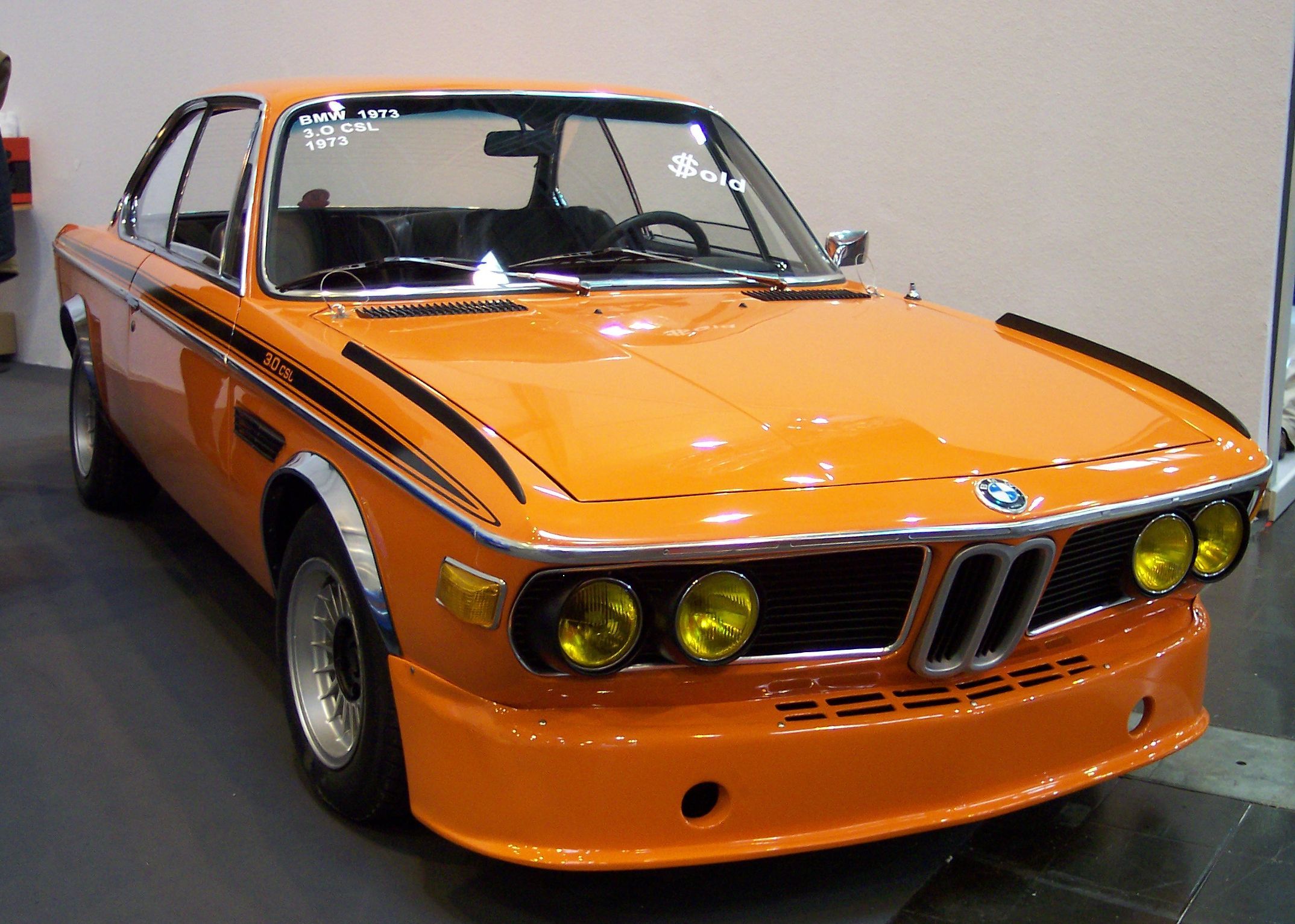
7. **1973 BMW 3.0 CSL** In a landscape heavily dominated by American muscle, the 1973 BMW 3.0 CSL offered a distinctly European interpretation of performance, emerging as BMW’s sophisticated answer to the burgeoning popularity of lightweight sports sedans. Unlike its American counterparts that often prioritized sheer, brute horsepower for straight-line speed, the 3.0 CSL was powered by a refined 3.0L inline-six engine, producing around 200 horsepower. This powertrain was meticulously tuned not for outright velocity, but rather for exceptional balance and precise handling, showcasing a different philosophy of driving exhilaration.
Often known as the “Batmobile” due to its distinctive aerodynamic package, the 3.0 CSL was a testament to meticulous engineering focused on reducing weight and optimizing dynamics. This commitment to performance through lightness extended to the interior, which featured a no-frills, driver-focused cabin. Lightweight materials were extensively used throughout, stripping away unnecessary luxuries to enhance its sporting character and connection with the road. This focus on driver engagement and technical prowess helped solidify its status as a true ’70s icon, particularly among European automotive enthusiasts.
Its unique combination of European refinement and storied racing heritage made it stand apart from the raw power of American muscle cars, offering a compelling alternative for drivers who valued precision, agility, and a sophisticated driving experience. The 3.0 CSL wasn’t just a car; it was a statement of engineering excellence, demonstrating that performance could be achieved through elegant design and balanced dynamics, making it an unforgettable legend of the decade.
Continuing our journey through the electrifying decades of the 1960s and 1970s, we now turn our attention to more unforgettable machines that solidified their place in automotive lore. This era wasn’t just about the mass-market hits; it was also a crucible for rare gems, racing dynamos, and cultural phenomena that pushed boundaries and left an enduring legacy. These are the vehicles that captured imaginations, dominated racetracks, and set new standards for performance, design, and sheer desirability, reminding us that the spirit of innovation and passion was truly boundless.
Car Model Information: 2022 Mitsubishi Outlander SE
Name: BMW E9
Manufacturer: BMW
Production: 1968–1975
Assembly: Rheine
Class: Grand tourer
Layout: Front-engine, rear-wheel-drive
BodyStyle: Coupé
Related: BMW New Six
Engine: BMW M30,straight-six engine
Wheelbase: Convert
Length: Convert
Width: Convert
Height: Convert
Predecessor: BMW New Class coupé
Successor: BMW 6 Series (E24)
Designer: Wilhelm Hofmeister (automobile designer)
Platform: BMW New Class
Categories: All articles with unsourced statements, Articles with short description, Articles with unsourced statements from January 2019, BMW model codes, BMW vehicles
Summary: The BMW E9 is a range of coupés produced by German automaker BMW from 1968 to 1975. Initially released as the 2800 CS model, the E9 was based on the BMW 2000 C / 2000 CS four-cylinder coupés, which were enlarged to fit the BMW M30 six-cylinder engine. The E9’s bodywork was built by Karmann.
As a racing car, the E9 was very successful in the European Touring Car Championship and the Deutsche Rennsport Meisterschaft, especially the 3.0 CSL homologation model.
The E9 range was replaced by the E24 6 Series.
Get more information about: BMW E9
Buying a high-performing used car >>>
Brand: BMW Model: 3.0 CSL
Price: $18,409 Mileage: 57,702 mi.
Read more about: Buckle Up, Buttercup! These 15 Iconic Rides Totally Defined the ’70s – Did YOU Cruise in Any of Them?
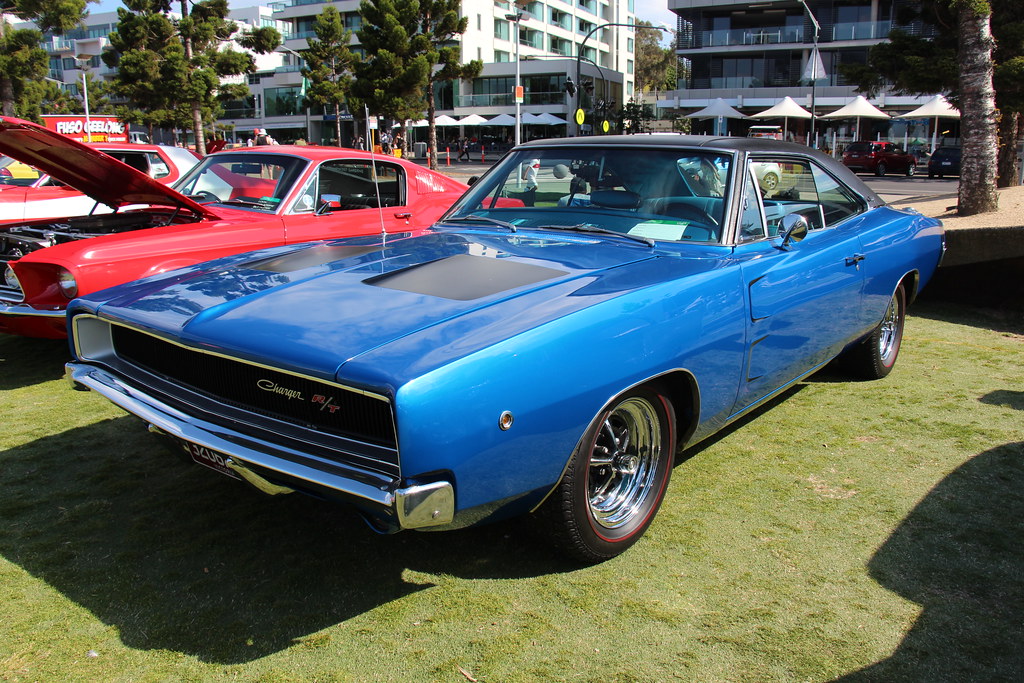
8. **1968 Dodge Charger R/T**Stepping out from the shadows of its contemporaries, the 1968 Dodge Charger R/T emerged as a muscular and aggressive icon, a true embodiment of raw American power and style. Its distinctive fastback roofline, coupled with hidden headlights, created a menacing appearance that immediately set it apart. This was a car that didn’t just drive; it made a statement, asserting its dominance on the road with an undeniable presence that has only grown in legend over the decades.
Under the hood, the R/T (Road/Track) variant lived up to its name, offering formidable performance. It was particularly potent with its 7.2L V8 HEMI engine, which was rated at an astounding 425 horsepower. This powerhouse propelled the Charger R/T with brutal force, making it a force to be reckoned with on any drag strip or open highway. The combination of its striking aesthetics and formidable engine solidified its position as a standout in the crowded muscle car field.
Inside, the Charger featured a functional interior, thoughtfully designed with sport bucket seats and a clean dashboard layout. This driver-focused cockpit ensured that while the car was undeniably powerful, it also offered a compelling experience for those behind the wheel. Its blend of untamed power and iconic styling has helped the 1968 Dodge Charger R/T etch its name permanently into the annals of automotive history, captivating enthusiasts across the globe.
Car Model Information: 2021 Dodge Charger SXT
Name: Dodge Charger
Caption: 1969 Dodge Charger
Manufacturer: Dodge
Production: 1966–1978,1981–1987,2005–present
ModelYears: 1966–1978,1982–1987,2006–present
Categories: 1960s cars, 1970s cars, 1980s cars, 2000s cars, 2010s cars
Summary: The Dodge Charger is a model of automobile marketed by Dodge in various forms over eight generations since 1966.
The first Charger was a show car in 1964. A 1965 Charger II concept car resembled the 1966 production version.
In the United States, the Charger nameplate has been used on mid-size cars, personal luxury coupes, subcompact hatchbacks, and full-size sedans.
Get more information about: Dodge Charger
Buying a high-performing used car >>>
Brand: Dodge Model: Charger
Price: $21,588 Mileage: 46,810 mi.
Read more about: Beyond the Pony: Unearthing Ford’s Fastest ’60s Muscle Car Gems You Never Knew Existed
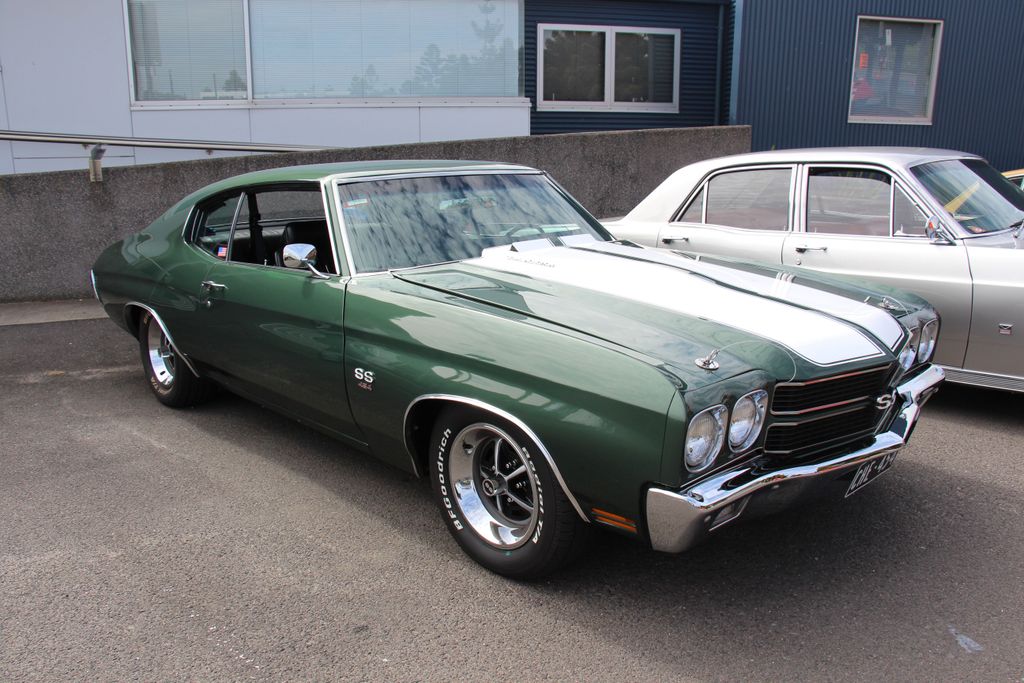
9. **1970 Chevrolet Chevelle SS**Chevrolet’s Chevelle SS in 1970 stood as a veritable heavyweight in the muscle car arena, a machine that perfectly blended strong straight-line speed with classic, balanced styling. It was the quintessential American muscle, offering an intoxicating mix of performance and an aesthetic that remains timelessly appealing. This vehicle didn’t just turn heads; it commanded respect, becoming a defining symbol of the era’s automotive prowess and Chevrolet’s commitment to high-performance engineering.
The true heart of the 1970 Chevelle SS lay in its impressive range of engine options, culminating in a colossal 7.4L V8 that was capable of producing an astounding 450 horsepower. This immense power, delivered exclusively to the rear wheels, made it the “king of the streets,” a title earned through its ability to dominate both competition and the open road. The presence of twin racing stripes often signaled the serious business lurking beneath the hood, leaving no doubt about its performance credentials.
Despite its formidable power, the Chevelle SS offered a remarkably comfortable seating experience and a straightforward interior that prioritized functionality over unnecessary frills. This unadorned approach allowed the driver to focus purely on the exhilarating driving experience. Its blend of raw horsepower and iconic design ensures the 1970 Chevrolet Chevelle SS remains one of the era’s most defining muscle cars, a cherished legend among collectors and enthusiasts alike.
Car Model Information: 2022 Mitsubishi Outlander SE
Name: Chevrolet Chevelle
Caption: 1970 Chevrolet Chevelle SS 396 Sport Coupe
Manufacturer: Chevrolet
Production: 1963–1977
ModelYears: 1964–1977
Class: Mid-size
Platform: GM A platform (RWD)
Layout: FR layout
Successor: Chevrolet Malibu
Categories: 1970s cars, All articles needing additional references, All articles that may contain original research, All articles with specifically marked weasel-worded phrases, All articles with unsourced statements
Summary: The Chevrolet Chevelle is a mid-sized automobile that was produced by the Chevrolet division of General Motors (GM) in three generations for the 1964 to 1977 model years. Part of the GM A-body platform, the Chevelle was one of Chevrolet’s most successful nameplates. Body styles included coupes, sedans, convertibles, and station wagons. The “Super Sport” versions were produced through the 1973 model year and Lagunas from 1973 through to 1976.
After a four-year absence, the El Camino was reintroduced as part of the new Chevelle lineup in 1964.
From 1964 to 1969, GM of Canada sold a modified version of the Chevelle that included a Pontiac-style grille, and a LeMans instrument panel, marketed as the Beaumont.
The Malibu was the top-of-the-line model to 1972, and completely replaced the Chevelle nameplate starting with the redesigned, and downsized 1978 model year.
Get more information about: Chevrolet Chevelle
Buying a high-performing used car >>>
Brand: Chevrolet Model: Chevelle SS
Price: $18,409 Mileage: 57,702 mi.
Read more about: Buckle Up, Buttercup! These 15 Iconic Rides Totally Defined the ’70s – Did YOU Cruise in Any of Them?
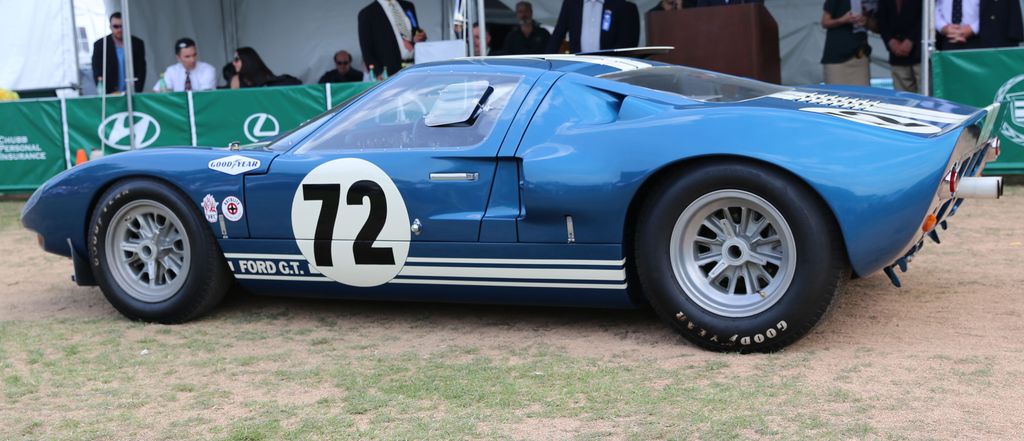
10. **Ford GT40**The legend of the Ford GT40 requires no introduction; it is a name synonymous with American racing dominance and a relentless pursuit of victory. Developed in the 1960s, this iconic race car was born from a singular, audacious ambition: to dethrone Ferrari at the prestigious 24-hour endurance race at Le Mans. What emerged from this challenge was not merely a car, but a true monster on the track, destined to rewrite motorsport history with its incredible performance.
The final product was a V8-powered race car that, against all odds, went on to not only beat Ferrari at Le Mans but also to utterly dominate the entire motorsport world for several years following its initial victory. This unparalleled success cemented its place as one of the most legendary American race cars ever built, a testament to brilliant engineering and unyielding determination. Its low-slung, aerodynamic profile was designed for speed, allowing it to slice through the air with incredible efficiency.
Beyond its racing triumphs, the Ford GT40 stands as a cultural touchstone, embodying the spirit of innovation and fierce competition that characterized the era. Its sleek design and a guttural roar of its V8 engine left an indelible impression on everyone who witnessed it. The GT40 is more than just a car; it’s a saga of overcoming adversity and achieving automotive immortality, making it an undisputed “Racing Dynamo” from the golden age.
Car Model Information: 1966 Ford GT40
Name: Ford GT40
Caption: Ford GT40 Mk.I in JWA Gulf Oil racing colors
Manufacturer: Ford Advanced Vehicles,John Wyer,Kar Kraft,Holman-Moody,Shelby American
Production: 1964–1969
Assembly: Slough,Los Angeles
Designer: Ron Bradshaw
Class: Group 4 (racing),Group 5 (racing),Group 6 (racing)
BodyStyle: coupé
Layout: MR layout
Engine: Cubic inch,289 CID (4737 cc) V-8,302 CID (4942 cc) V-8,427 CID (6997 cc) V-8
Transmission: Manual transmission
Wheelbase: 95 in
Abbr: on
Length: 160 in
Width: 70 in
Height: 40.5 in
Weight: convert
Successor: Ford P68
Sp: uk
Categories: 24 Hours of Le Mans race cars, All Wikipedia articles needing clarification, All articles needing additional references, All articles that may contain original research, All articles with specifically marked weasel-worded phrases
Summary: The Ford GT40 is a high-performance mid-engined racing car originally designed and built for and by the Ford Motor Company to compete in 1960s European endurance racing and the World Sportscar Championship. Its specific impetus was to beat Scuderia Ferrari, which had won the prestigious 24 Hours of Le Mans race for six years running from 1960 to 1965. As rules of the time required that GT cars were built in dozens and sold, around 100 cars in total have been made, mostly as 289 cu in (4.7 L) V8-powered Mk Is, of which at least 50 were made in 1965, which allowed FIA-homologation as Group-4-Sportscar for 1966 until 1971. This gave the old MK.I car of Gulf-Wyer the chance to enter and win Le Mans in 1968 and 1969 after prototypes had been limited to 3 litre, with the performance of the Ford 7-litre-V8 in the factory 1966 Mk.II and 1967 Mk.IV prototypes causing this rule change, which also banned the 4-litre V12 Ferrari 330P4 and others after 1967. The Mk.III designation was used for some road-legal cars.
The Ford GT40 debuted in 1964, and improvements in 1965 led to Ford winning World Championships categories from 1966 to 1968. The first Le Mans win came in 1966 with three 427 cu in (7.0 L) powered Mk.II prototypes crossing the finish line together, the second in 1967 with the same engine now in quite different US-built Mk.IV prototype chassis similar to the “J-car” mule. In order to lower ever-higher race top speeds, a rule change from 1968 onwards limited prototypes to 3.0 litre Formula 1 engines; the sportscar “loophole”, however, allowed the private JW “Gulf Oil” team to win at Le Mans in 1968 and 1969 running a Mk.I with a 5.0 litre engine.
The GT40 effort began in Britain in the early 1960s when Ford Advanced Vehicles began to build the Mk I, based upon the British Lola Mk6, in Slough, UK. After disappointing race results, the engineering team was moved in 1964 to Dearborn, Michigan, US, to design and build cars by its advanced developer, Kar Kraft. All chassis versions were powered by a series of American-built Ford V8 OHV engines modified for racing.
In the 1966 Le Mans, the GT40 Mk II car broke Ferrari’s winning streak, making Ford the first American manufacturer to win a major European race since Jimmy Murphy’s Duesenberg in the 1921 French Grand Prix. In the 1967 Le Mans, the GT40 Mk IV car became the only car developed and assembled entirely (both chassis and engine) in the United States to achieve the overall win at Le Mans.
Get more information about: Ford GT40
Buying a high-performing used car >>>
Brand: Ford Model: GT40
Price: $110,000 Mileage: 13,350 mi.
Read more about: From Dust to Dollars: The 10 Most Epic Barn-Find Cars That Will Blow Your Mind!
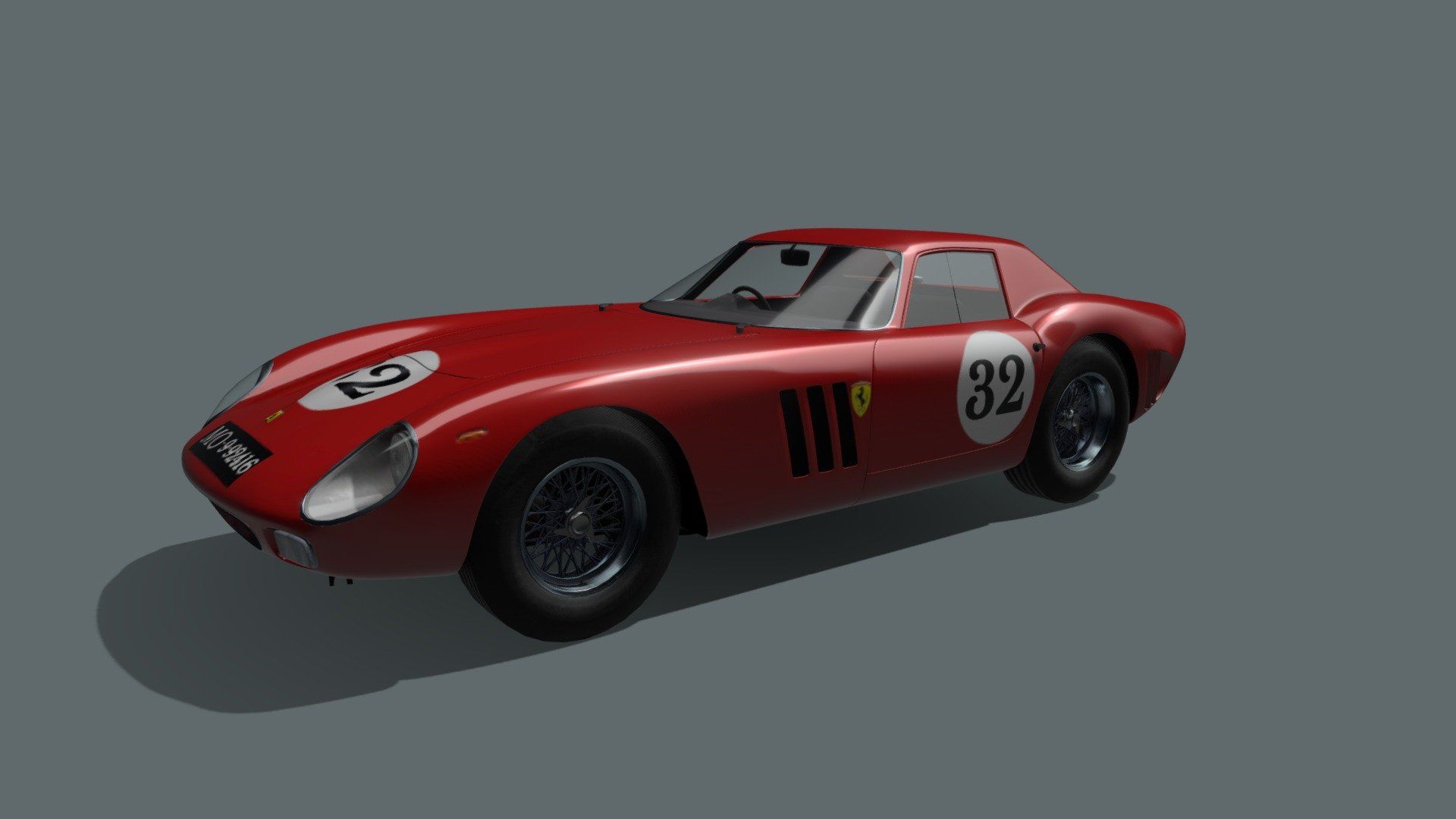
11. **Ferrari 250 GTO**When discussing the most famous automobiles of all time, the Ferrari 250 GTO invariably enters the conversation, not just for its breathtaking beauty and engineering prowess, but also for its legendary status as one of the most exclusive and valuable cars ever created. This is undeniably one of those rare machines that transcend mere transportation to become a work of art, a testament to Enzo Ferrari’s vision of blending speed with unparalleled elegance.
Indeed, its exclusivity is staggering, with only 36 units ever made, cementing its status as an ultimate “Rare Gem.” This scarcity, combined with its illustrious racing heritage, has driven its value to astronomical heights; one example was famously sold at auction in November 2021 for an astounding $70 million, making it the most expensive car ever sold. This valuation underscores its profound cultural impact and its position as an investment piece as much as a performance vehicle.
At its core, the 250 GTO is a homologated race car, designed to be driven on the road while retaining its competition-bred capabilities. It’s powered by a screaming V12 motor, pushing out roughly 300 horsepower, meticulously mated with a 5-speed stick shift. This combination delivered an intoxicating driving experience, allowing it to dominate racetracks while retaining an undeniable allure on public roads, a true “Racing Dynamo” that continues to mesmerize generations of enthusiasts.
Car Model Information: 2022 Mitsubishi Outlander SE
Name: Ferrari 250 GTO
Caption: 1963 Ferrari 250 GTO (chassis 4153GT)
Manufacturer: Ferrari
Production: 1962–1964,(36 produced)
Designer: Giotto Bizzarrini,Scaglietti
Class: Sports car
BodyStyle: berlinetta
Related: Ferrari 330#330 LMB,Ferrari P#250 LM
Layout: FR layout
Engine: 2,953 cc,Ferrari Colombo engine#250,Overhead camshaft#Single Overhead camshatf,Weber carburetor,Compression ratio
Powerout: 300 PS
Abbr: on
Order: flip @ 5500 rpm
Transmission: Manual transmission
Wheelbase: 2400 mm
Length: 4325 mm
Width: 1600 mm
Height: 1210 mm
Weight: convert
Predecessor: Ferrari 250 GT SWB
Successor: Ferrari 250 LM,Ferrari 288 GTO
Categories: All articles lacking reliable references, All articles needing additional references, All articles with bare URLs for citations, All articles with unsourced statements, Articles lacking reliable references from March 2022
Summary: The Ferrari 250 GTO is a grand tourer produced by Ferrari from 1962 to 1964 for homologation into the FIA’s Group 3 Grand Touring Car category. It was powered by Ferrari’s Tipo 168/62 Colombo V12 engine. The “250” in its name denotes the displacement in cubic centimeters of each of its cylinders; “GTO” stands for Gran Turismo Omologato, Italian for “Grand Touring Homologated”.
Just 36 of the 250 GTOs were manufactured between 1962 and 1964. This includes 33 cars with 1962–63 bodywork (Series I) and three with 1964 (Series II) bodywork similar to the Ferrari 250 LM. Four of the older 1962–1963 (Series I) cars were updated in 1964 with Series II bodies.
When new, the 250 GTO cost $18,000 in the United States, with buyers personally approved by Enzo Ferrari and his dealer for North America, Luigi Chinetti. This model has since become highly desired by automobile collectors and sales have repeatedly set price records. The current record for world’s most expensive Ferrari was set in June 2018 when a 1963 250 GTO (chassis 4153GT) was sold in a private sale for $70 million.
In 2004, Sports Car International placed the 250 GTO eighth on their list of Top Sports Cars of the 1960s, and nominated it the top sports car of all time. Similarly, Motor Trend Classic placed the 250 GTO first on a list of the “Greatest Ferraris of All Time”. Popular Mechanics named it the “Hottest Car of All Time”.
Get more information about: Ferrari 250 GTO
Buying a high-performing used car >>>
Brand: Ferrari Model: 250 GTO
Price: $18,409 Mileage: 57,702 mi.
Read more about: From Dust to Dollars: The 10 Most Epic Barn-Find Cars That Will Blow Your Mind!
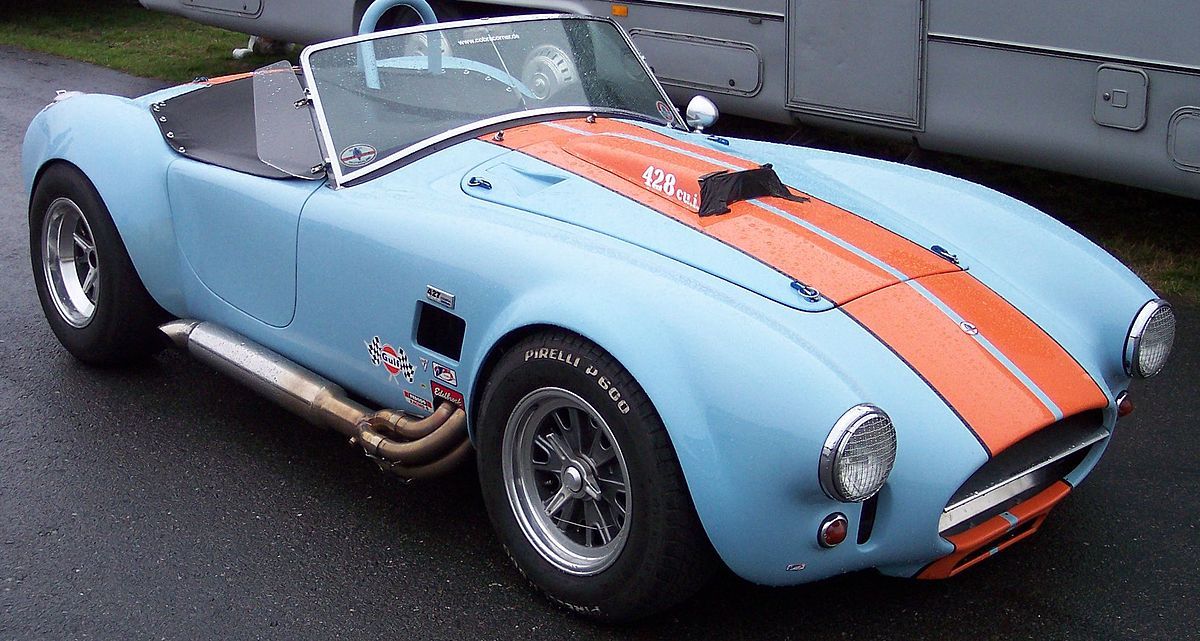
12. **AC Cobra**Few automobiles are as radical and instantly recognizable as the AC Cobra, a machine born from a brilliant collaboration and an unyielding desire for speed. Conceived by the legendary Carroll Shelby, the Cobra was a masterstroke of automotive alchemy, combining a potent Ford V8 engine with a lightweight, two-seater body crafted by the British automaker AC. The result was a car that was not just seriously quick, but utterly exhilarating, a true “Racing Dynamo” that redefined performance expectations.
The most extreme iterations came fitted with a ferocious 427-cubic inch big block V8, rated at a staggering 425 horsepower. With this immense power under the hood, the AC Cobra was capable of reaching incredible top speeds and delivering blistering acceleration, solidifying its reputation as a formidable presence on both road and track. This raw, unadulterated power, paired with its minimalist design, gave the Cobra an almost feral character, a beast barely contained.
The AC Cobra quickly became an icon, a symbol of American ingenuity fused with European design principles. Its aggressive stance, open-top exhilaration, and spine-tingling exhaust note ensured it captivated enthusiasts across the globe. Even today, the Cobra represents the pinnacle of a bygone era when engineering brilliance and a passion for performance converged to create truly unforgettable driving machines, highly desired by collectors worldwide.
Car Model Information: 1965 AC Shelby Cobra Classic
Caption: AC Cobra 427
Layout: front-engine, rear-wheel drive layout
Manufacturer: AC Cars,Shelby American
Production: 1965–1967
Name: MkIII
Aka: AC Shelby Cobra , Shelby AC Cobra
BodyStyle: Roadster (automobile)
Assembly: Thames Ditton,Surrey,England
Predecessor: AC Ace
Class: Sports car
Successor: AC MK IV
Related: AC Frua,Shelby Daytona
Engine: convert,V8 engine
Wheelbase: 90 in
Abbr: on
Order: flip
Length: 156 in
Width: 68 in
Height: 48 in
Weight: 2355 lb
Categories: 1960s cars, AC vehicles, All articles with unsourced statements, Articles with short description, Articles with unsourced statements from December 2014
Summary: The AC Cobra, sold in the United States as the Shelby Cobra and AC Shelby Cobra, is a sports car manufactured by British company AC Cars, with a Ford V8 engine. It was produced intermittently in both the United Kingdom and later the United States since 1962.
Get more information about: AC Cobra
Buying a high-performing used car >>>
Brand: AC Model: Cobra
Price: $102,595 Mileage: 61 mi.
Read more about: Beyond the Pony: Unearthing Ford’s Fastest ’60s Muscle Car Gems You Never Knew Existed
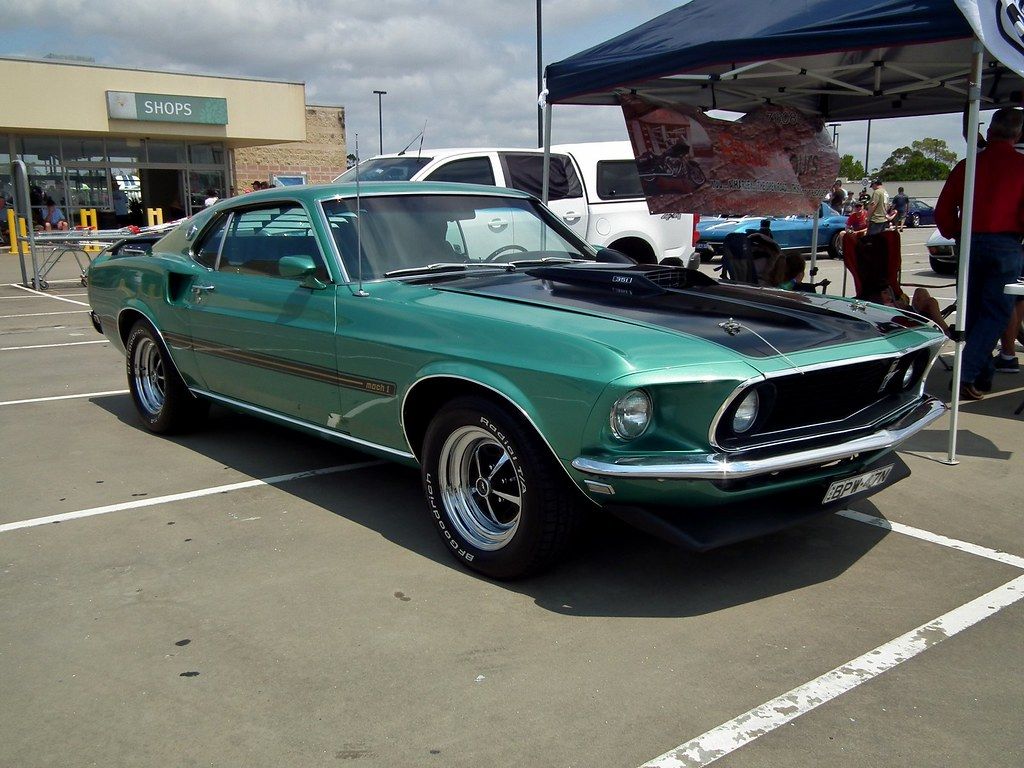
13. **1969 Boss 429 Mustang**The 1969 Boss 429 Mustang wasn’t just another variant of Ford’s beloved pony car; it was the “ultimate Mustang,” a purpose-built homologation special conceived to assert Ford’s dominance in NASCAR. Each one was a testament to meticulous craftsmanship, hand-built by Kar Kraft, featuring modified shock towers specifically designed to accommodate the massive 429 engine. This extraordinary attention to detail made it an instant legend and a prized “Rare Gem” from the golden age of muscle.
Beneath its distinctive hood scoop lay the reason for its existence: a massive 429 cubic inch (7.0-liter) V8 engine. This powerhouse was a street-legal version of Ford’s NASCAR race engine, providing immense torque and breathtaking straight-line performance. The very act of stuffing such a colossal engine into the Mustang chassis was a statement of intent, showcasing Ford’s commitment to winning on the track and offering unparalleled power to the discerning few.
Its limited production numbers and unique engineering—born directly from a racing mandate—cemented its status among the most coveted muscle cars. The hood scoop alone was famously “worth the price of admission,” signaling the sheer brute force contained within. The 1969 Boss 429 Mustang remains a revered icon, not only for its raw power and striking aesthetics but also for its direct lineage to the high-stakes world of professional racing, a true “Racing Dynamo” for the road.
Car Model Information: 2024 Ford Mustang GT
Name: Ford Mustang
Caption: 2018 Ford Mustang GT 5.0
Aka: Ford T5 (Germany)
Manufacturer: Ford Motor Company
Production: March 1964 – present
ModelYears: 1965–present
Class: Unbulleted list
BodyStyle: Unbulleted list
Layout: Front-engine, rear-wheel-drive layout
Categories: 1970s cars, 1980s cars, 1990s cars, 2+2 coupés, 2000s cars
Summary: The Ford Mustang is a series of American automobiles manufactured by Ford. In continuous production since 1964, the Mustang is currently the longest-produced Ford car nameplate. Currently in its seventh generation, it is the fifth-best selling Ford car nameplate. The namesake of the “pony car” automobile segment, the Mustang was developed as a highly styled line of sporty coupes and convertibles derived from existing model lines, initially distinguished by “long hood, short deck” proportions.
Originally predicted to sell 100,000 vehicles yearly, the 1965 Mustang became the most successful vehicle launch since the 1927 Model A. Introduced on April 17, 1964 (16 days after the Plymouth Barracuda), over 400,000 units were sold in its first year; the one-millionth Mustang was sold within two years of its launch. In August 2018, Ford produced the 10-millionth Mustang; matching the first 1965 Mustang, the vehicle was a 2019 Wimbledon White convertible with a V8 engine.
The success of the Mustang launch led to multiple competitors from other American manufacturers, including the Chevrolet Camaro and Pontiac Firebird (1967), AMC Javelin (1968), and Dodge Challenger (1970). It also competed with the Plymouth Barracuda, which was launched around the same time. The Mustang also had an effect on designs of coupes worldwide, leading to the marketing of the Toyota Celica and Ford Capri in the United States (the latter, by Lincoln-Mercury). The Mercury Cougar was launched in 1967 as a unique-bodied higher-trim alternative to the Mustang; during the 1970s, it included more features and was marketed as a personal luxury car.
From 1965 until 2004, the Mustang shared chassis commonality with other Ford model lines, staying rear-wheel-drive throughout its production. From 1965 to 1973, the Mustang was derived from the 1960 Ford Falcon compact. From 1974 until 1978, the Mustang (denoted Mustang II) was a longer-wheelbase version of the Ford Pinto. From 1979 until 2004, the Mustang shared its Fox platform chassis with 14 other Ford vehicles (becoming the final one to use the Fox architecture). Since 2005, Ford has produced two generations of the Mustang, each using a distinct platform unique to the model line.
Through its production, multiple nameplates have been associated with the Ford Mustang series, including GT, Mach 1, Boss 302/429, Cobra (separate from Shelby Cobra), and Bullitt, along with “5.0” fender badging (denoting 4.9 L OHV or 5.0 L DOHC V8 engines).
Get more information about: Ford Mustang
Buying a high-performing used car >>>
Brand: Ford Model: Mustang
Price: $37,565 Mileage: 37,293 mi.
Read more about: Beyond the Pony: Unearthing Ford’s Fastest ’60s Muscle Car Gems You Never Knew Existed
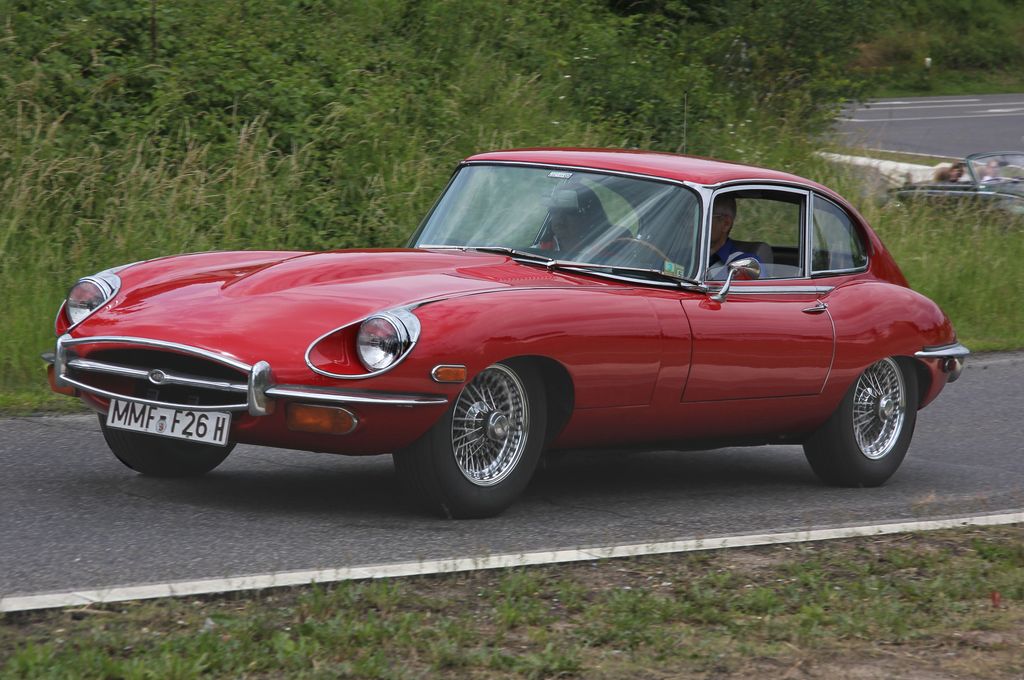
14. **Jaguar E-Type**Prepare to feast your eyes on a machine that transcends automotive design to become a pure work of art: the Jaguar E-Type. This beauty is easily one of the most gorgeous automobiles ever conceived, a sentiment famously echoed by none other than Enzo Ferrari, who declared the E-Type the most beautiful vehicle he had ever seen. Its flowing lines, long hood, and perfectly proportioned silhouette have made it an enduring “Cultural Phenom” and a timeless symbol of British elegance and performance.
This flagship Jaguar Grand Tourer first graced the market in 1961, quickly captivating the world with its blend of sophisticated styling and impressive capabilities. It remained a cherished part of the lineup for nearly 15 years, evolving while retaining its core allure. Early production models were offered with a refined six-cylinder motor, delivering a smooth yet spirited driving experience that perfectly complemented its luxurious persona.
However, it is the V12 version of the E-Type that often remains the most legendary one of them all, offering an even more refined and powerful driving experience. This blend of breathtaking aesthetics and exhilarating performance, combined with its luxurious interior, made the E-Type a coveted possession. It proved that a car could be both a high-performance machine and an undeniable style icon, making it a truly unforgettable presence from the golden age of motoring.
Car Model Information: 1962 Jaguar E-Type XKE
Sp: uk
Name: Jaguar E-Type
Caption: 1961 E-Type Series 1 3.8-Litre, the first production model of this open two-seater
Aka: Jaguar XK-E , Jaguar V-12
Manufacturer: Jaguar Cars
Production: 1961–1974
Class: Sports car
Predecessor: Jaguar XK150
Related: Jaguar D-Type,Jaguar XJ13
Successor: Jaguar XJS
Layout: FMR layout
Assembly: Coventry,England
Designer: Malcolm Sayer
Categories: 1970s cars, 2+2 coupés, All articles with dead external links, All articles with specifically marked weasel-worded phrases, All articles with unsourced statements
Summary: The Jaguar E-Type, or the Jaguar XK-E for the North American market, is a British front mid-engined sports car that was manufactured by Jaguar Cars Ltd from 1961 to 1974. Its sleek appearance, advanced technologies, high performance, and competitive pricing established it as an icon. The E-Type’s claimed 150 miles per hour (240 km/h) top speed, sub-7-second 0 to 60 mph (97 km/h) acceleration, largely unitary body construction, front and rear independent suspension with disc brakes, mounted inboard at the rear, and rack-and-pinion steering spurred industry-wide changes.
The E-Type was based on Jaguar’s D-Type racing car, which had won the 24 Hours of Le Mans for three consecutive years beginning in 1955.
The E-Type employed what was, for the early 1960s, a novel design principle, with a front subframe carrying the engine, front suspension and front bodywork bolted directly to the body tub. No ladder frame chassis, as was common at the time, was needed and as such the first cars weighed only 1,315 kg (2,899 lb).
It is rumored that, on its debut on 15 March 1961, Enzo Ferrari called it “the most beautiful car ever made”, but this statement is not fully confirmed. In 2004, Sports Car International magazine placed the E-Type at number one on their list of Top Sports Cars of the 1960s. In March 2008, the Jaguar E-Type ranked first in The Daily Telegraph’s online list of the world’s “100 most beautiful cars” of all time.
Get more information about: Jaguar E-Type
Buying a high-performing used car >>>
Brand: Jaguar Model: E-Type
Price: $269,900 Mileage: 76,725 mi.
Read more about: Beyond the Legends: 10 Obscure 1960s Sports Cars Only True Collectors Recognize
As we bring our comprehensive tour through the coolest cars of the 60s and 70s to a close, it’s clear that these decades were a crucible of automotive brilliance. From roaring muscle cars that dominated the drag strips to sophisticated European grand tourers that redefined elegance, and legendary race machines that conquered the world’s most challenging tracks, each vehicle on our list tells a story of passion, innovation, and an unwavering commitment to the driving experience. They weren’t just modes of transportation; they were expressions of freedom, power, and individual style, leaving an indelible mark on culture and continuing to inspire automotive enthusiasts and collectors who cherish the ‘soul’ these machines undeniably possess. The cars of this era didn’t just make a fleeting splash; they carved out a lasting impression on the asphalt and in the collective memory, ensuring their legend will continue to resonate for generations to come.



